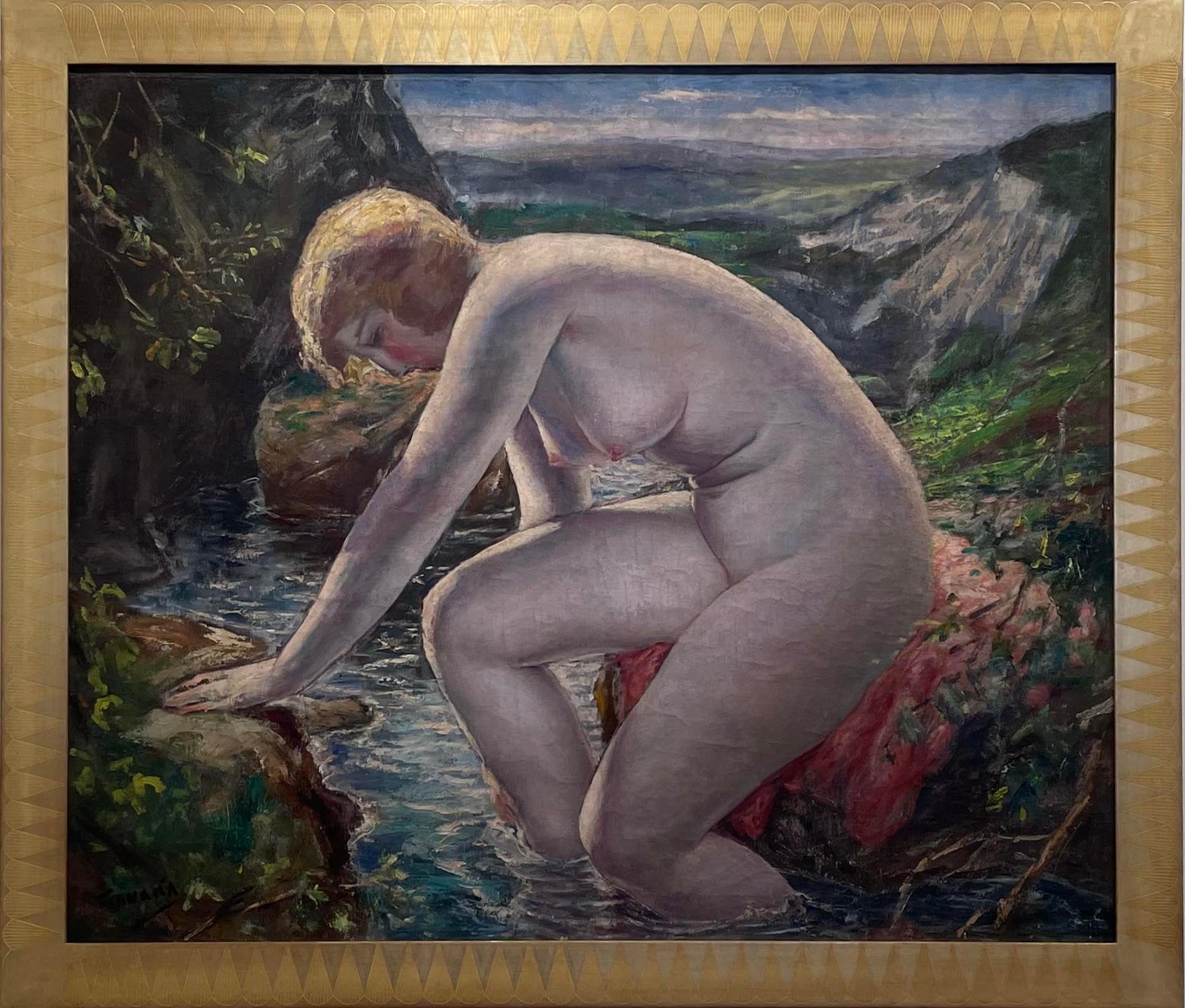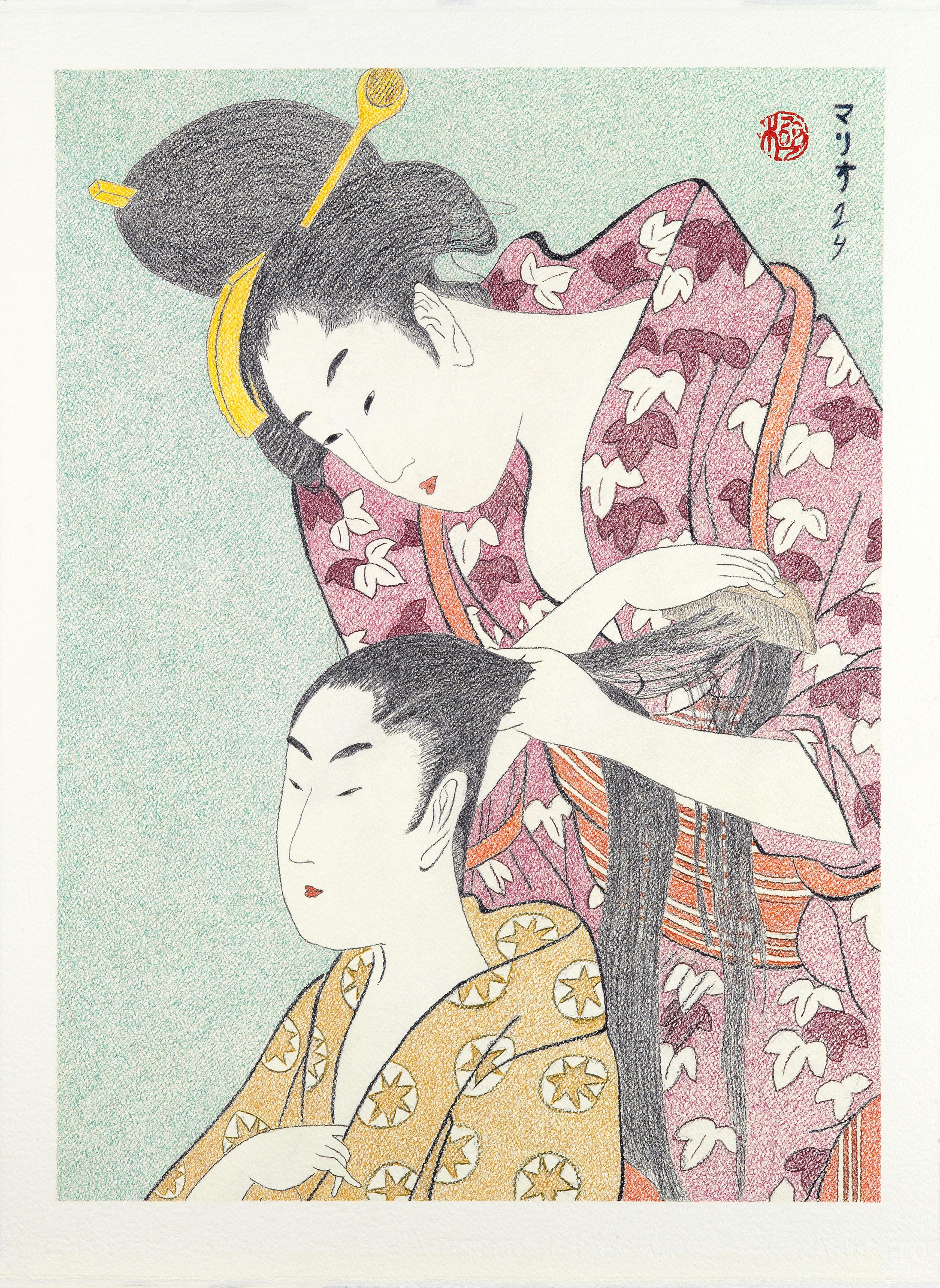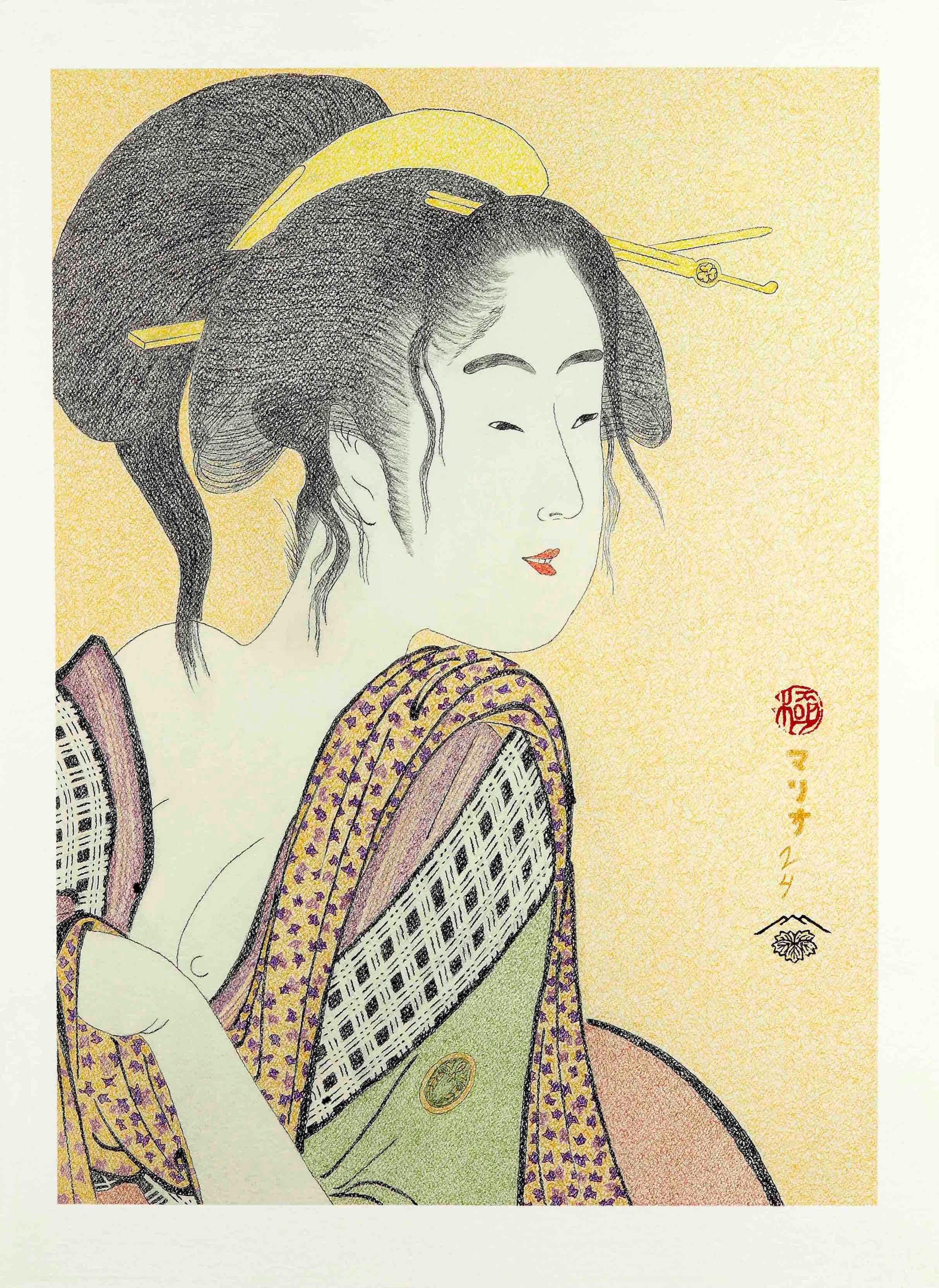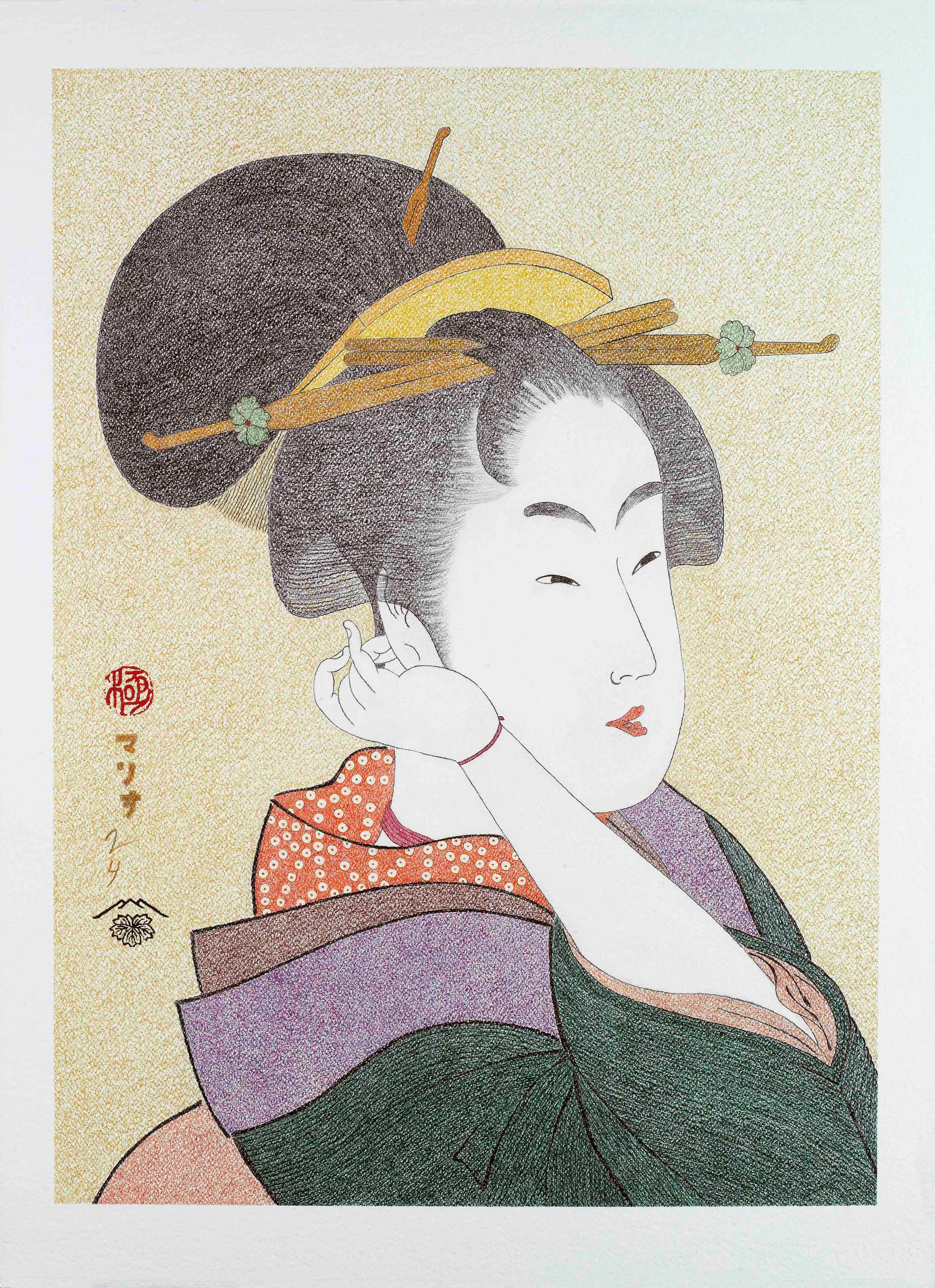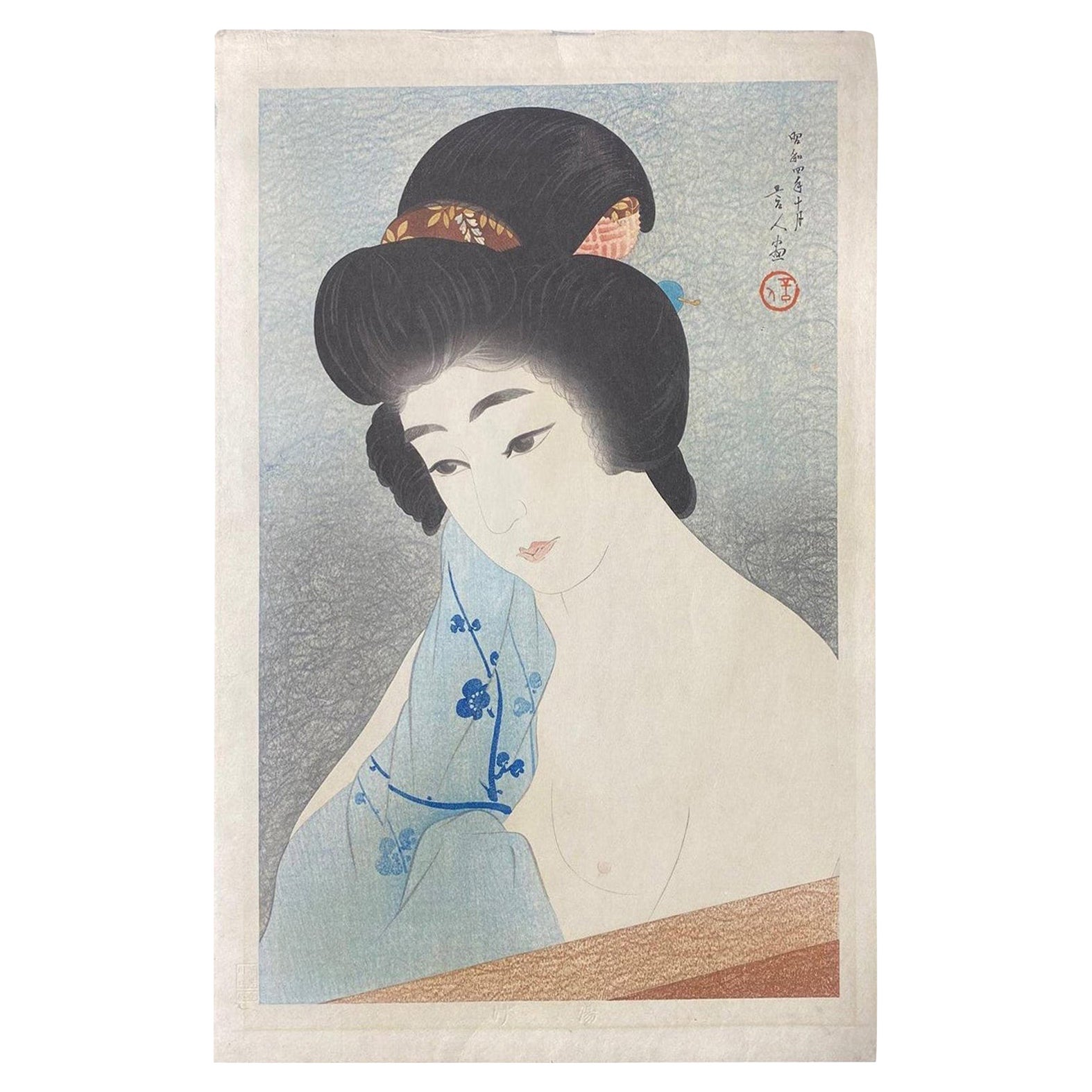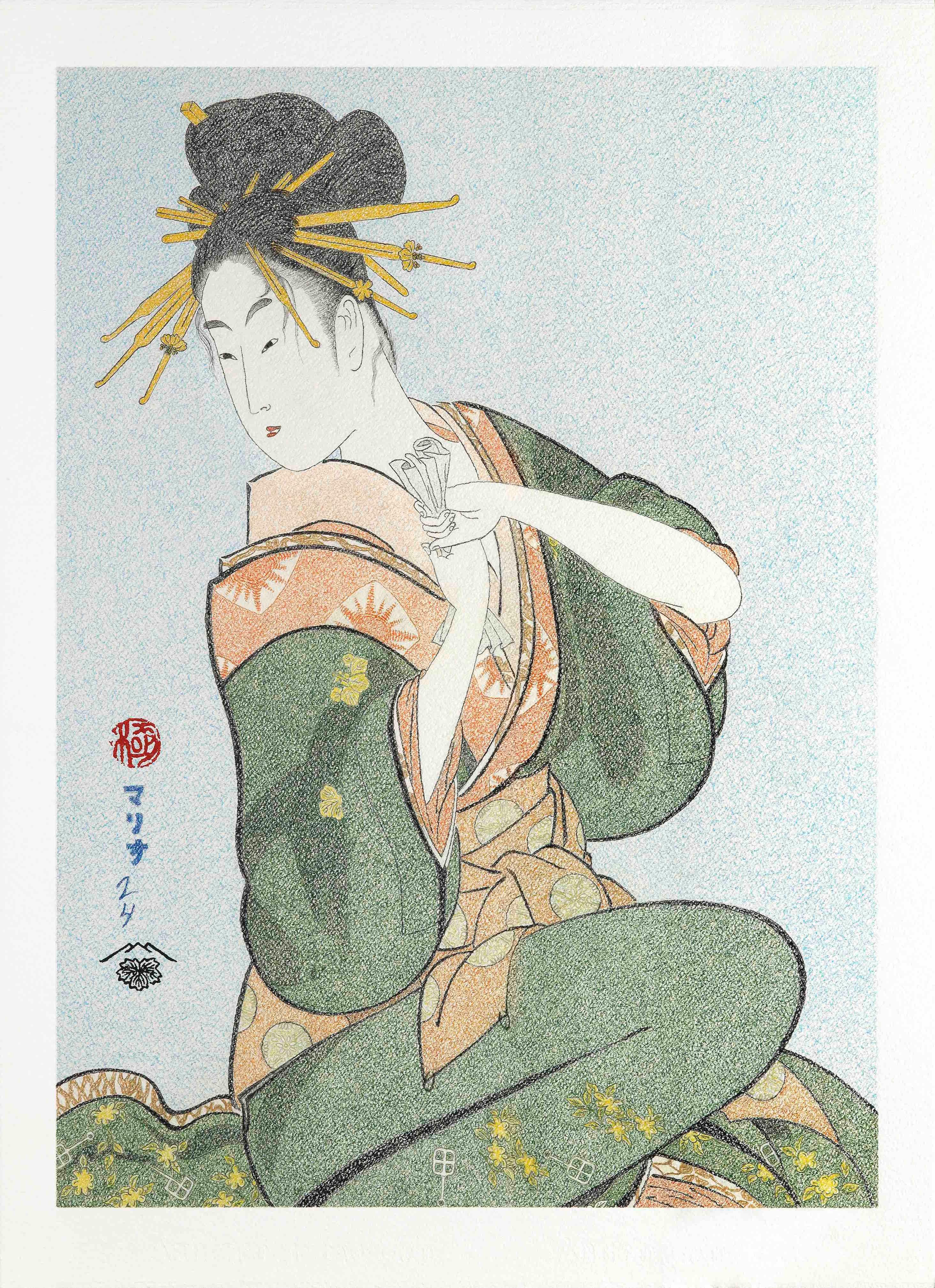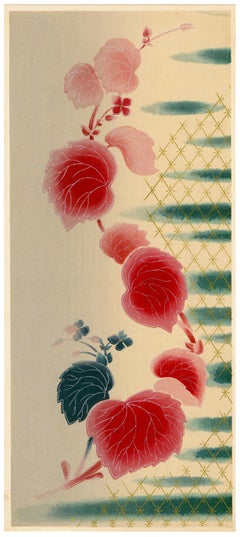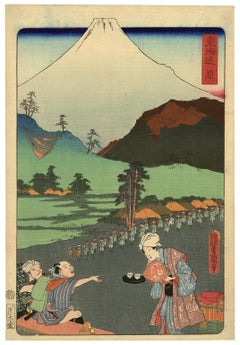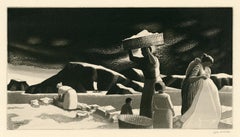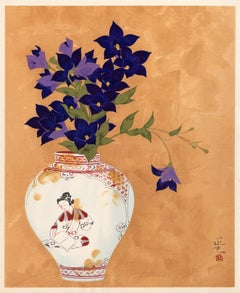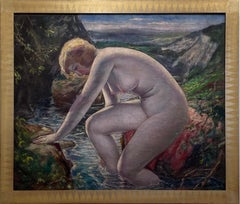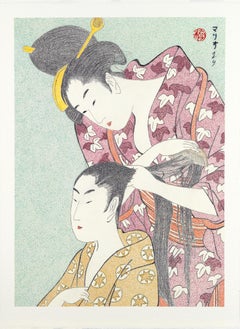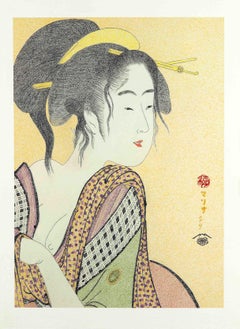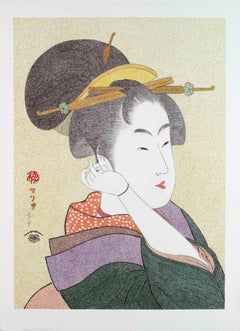Helen HydeThe Bath" - Femme artiste interculturelle de l'ère Meji1905
1905
À propos de cet article
- Créateur:Helen Hyde (1868 - 1919, Américain)
- Année de création:1905
- Dimensions:Hauteur : 41,28 cm (16,25 po)Largeur : 25,72 cm (10,125 po)
- Support:
- Mouvement et style:Showa
- Période:
- État:
- Adresse de la galerie:Myrtle Beach, SC
- Numéro de référence:1stDibs : LU532315647472
Helen Hyde
Helen Hyde est une graveuse et illustratrice née à Lima, dans l'État de New York, mais qui a passé une enfance cultivée à Oakland, en Californie. À 12 ans, elle commence à suivre des cours d'art auprès de Ferdinand Richardt, mais ces cours s'arrêtent brusquement deux ans plus tard, lorsque son père meurt et que sa famille s'installe à San Francisco. Hyde et sa mère s'installent à Philadelphie et, après avoir obtenu son diplôme à la Wellesley School, elle retourne à San Francisco et étudie à la School of Design. Hyde a étudié brièvement à l'Art Students League de New York entre 1888 et 1989. L'année suivante, elle part pour un séjour de quatre ans en Europe, au cours duquel elle étudie avec Franz Skarbina à Berlin, Rafael Collins et Albert Sterner à Paris, et passe plusieurs mois en Hollande et en Angleterre. À Paris, Hyde rencontre Félix Régamey, qui lui fait découvrir "la beauté des choses japonaises". Cette rencontre va profondément marquer sa vie et son œuvre. De retour à San Francisco, Hyde recherche des sujets dans le quartier chinois et réalise sa première série de gravures en couleur. En 1899, Hyde s'est rendue au Japon, où elle est devenue une fervente étudiante de la langue japonaise et de la peinture au pinceau classique auprès d'un artiste autrichien travaillant à Tokyo, et c'est auprès de lui qu'elle a appris à sculpter des blocs de bois. Elle finit par accepter le système japonais de division du travail et emploie des sculpteurs et des imprimeurs japonais (Shohiro Murata a gravé ses gravures sur bois pendant onze ans). Le Japon est le pays de Hyde jusqu'en 1914, date à laquelle elle retourne aux États-Unis pour des raisons de santé. Hyde a exposé à l'échelle nationale et internationale et son travail a été récompensé au Japon. Elle a reçu la médaille d'or à l'exposition Alaska-Yukon-Pacifique de Seattle en 1909 et la médaille de bronze pour la gravure sur bois à l'exposition internationale Panama-Pacifique en 1915. Hyde était membre de la Chicago Society of Etchers, de la Printmakers Society of California, de la Chicago Society of Artists et membre à vie de la Société de la Gravure en Couleur.
- ExpéditionRecherche du devis...Expédition depuis : Myrtle Beach, SC
- Politique des retours
Plus d'articles de ce vendeur
Tout afficherDébut des années 1900, Showa, Estampes - Figuratif
Gravure sur bois
années 1860, Edo, Estampes - Figuratif
Gravure sur bois
années 1940, Modernisme américain, Estampes - Figuratif
Aquatinte
années 1960, Moderne, Estampes - Nature morte
Gravure sur bois
Milieu du XIXe siècle, Edo, Estampes - Figuratif
Gravure sur bois
années 1930, Showa, Estampes - Figuratif
Gravure sur bois
Suggestions
années 1920, Moderne, Peintures - Figuratif
Toile, Huile
années 2010, Edo, Dessins et aquarelles - Figuratif
Crayon de couleur, Papier, Crayon gras, Graphite
années 2010, Edo, Dessins et aquarelles - Figuratif
Papier, Crayon de couleur, Crayon gras, Graphite
années 2010, Edo, Dessins et aquarelles - Figuratif
Papier, Crayon de couleur, Crayon gras, Graphite
Vintage, années 1920, Japonais, Showa, Estampes
Papier
années 2010, Edo, Dessins et aquarelles - Figuratif
Papier, Crayon de couleur, Crayon gras, Graphite
